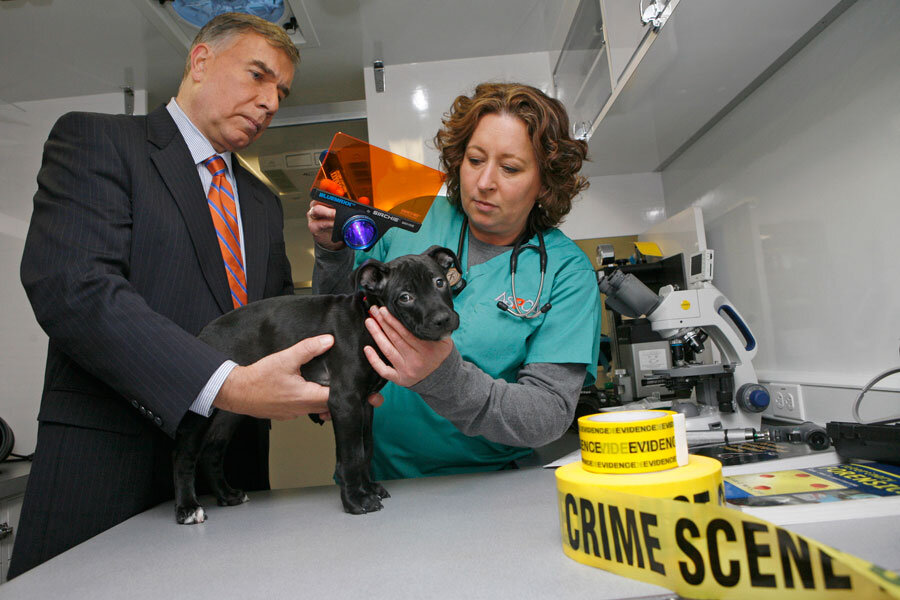Why the FBI is now tracking animal cruelty
In 2016, the Federal Bureau of Investigation (FBI) will begin collecting data on animal cruelty crimes throughout the country to prevent animal abuse and help flag those who might become violent offenders.
Animal cruelty crimes will now have their own organized category within the National Incident-Based Reporting System (NIBRS), the FBI’s public collection of national crime statistics. The FBI partnered with the National Sheriffs’ Association and the Animal Welfare Institute to make the change.
As of this year, animal rights advocates and law enforcement will now have access to organized data on convicted animal abusers such as age, criminal history, and location.
But how is this collection process different from before?
“It’s the difference between night and day,” Mary Lou Randour, senior advisor for animal cruelty programs at the Animal Welfare Institute, tells The Christian Science Monitor in a phone interview Wednesday. Offenses such as arson, murder, and assault all have their own categories, but animal abuse fell into a catchall category that Ms. Randour refers to as a “dumping ground.” In this "other crimes" folder, statistics on animal abuse became irretrievable and intentionally killing a pet was deemed equivalent with other offenses such as spitting.
“When the FBI says animal cruelty is important and we are going to track it, it sends a message to others in law enforcement and the community at large saying ‘pay attention to this,’” Ms. Randour says.
And even those not invested in animal rights have reason to pay attention. Studies in the US and other nations have shown that between 63-70 percent of people convicted of violent crimes began their criminal careers with acts of animal cruelty, according the New York Humane Association.
“Regardless of whether people care about how animals are treated, people – like legislators and judges – care about humans, and they can’t deny the data,” Natasha Dolezal, director of the animal law program in the Center for Animal Law Studies at Lewis & Clark College, told the Associated Press.
“Serial killers are closely linked to animal cruelty, so much so that it is exceedingly rare to find one who did not begin his or her career with animal abuse,” explains Dr. Harold Hovel in a 2015 report by the New York State Humane Association. “An individual willing to cause such suffering to animals is not likely to be sympathetic and empathetic to humans.”
The FBI's decision to collect animal cruelty data through NIBRS will help law enforcement identify violent hotspots in the country as well as strengthen cases by prosecutors.
“Picture a state with a lot of red dots which represent animal cruelty,” explains Randour. “There are also lots of other dots representing other forms of violence. When they are co-occurring, the area is even more dangerous and you can focus your resources on those places.”
NIBRS helps law enforcement to know where acts of burglary and gang violence are most frequent so they can act accordingly, and now acts of animal abuse will be exposed, helping law enforcement detect criminal patterns. Animal rights organizations can also reallocate resources based on the new federal data by focusing their attention and finances on a specific region of the country or a certain age demographic that seems most prone to animal violence.
And if prosecutors go after someone for committing a non-animal related crime but they are on FBI record for animal abuse, “you have another charge to bring, you have more to work with,” says Randour. “Its like a twofer.”






